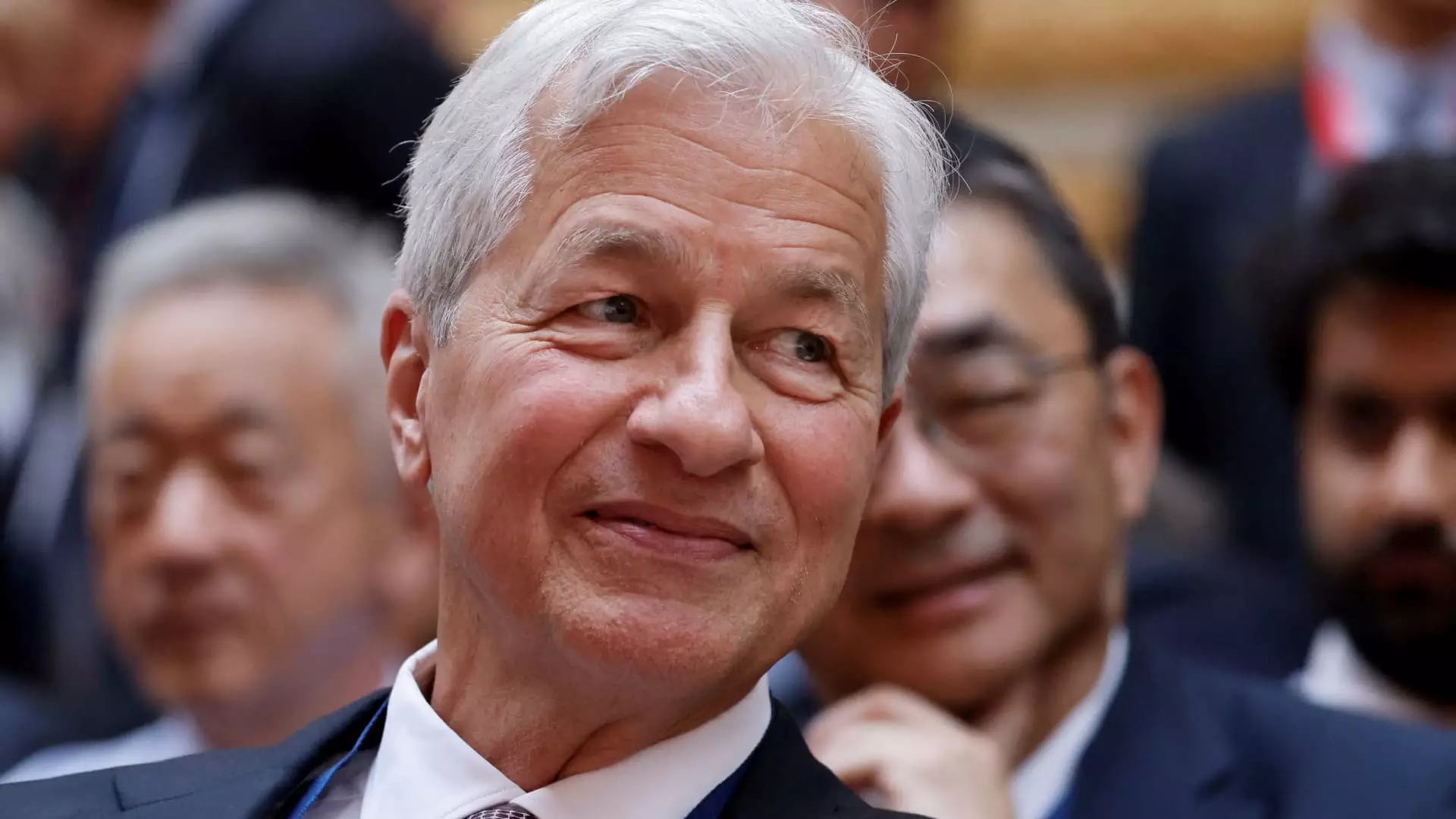In the world of banking, excess capital emerges as a double-edged sword. For JPMorgan Chase, it is a sign of robust profitability but also a source of considerable strategic pressure. Recently, the bank’s executives acknowledged that they possess approximately $35 billion in excess capital—funds that are not required to meet regulatory requirements. This situation, as tagged by the bank’s Chief Financial Officer Jeremy Barnum, represents a “high-class problem.” Such a financial buffer can deliver a distinct advantage; however, the pressing question remains: how does JPMorgan optimize this surplus in alignment with shareholder interests while maintaining a prudent financial posture?
JPMorgan’s leadership has hinted at a pivot towards increasing share buybacks as a means of managing their excess cash reserves. The rationale behind this strategy is straightforward: returning capital to shareholders can enhance stock value and signal confidence in the bank’s stability. With ongoing discussions among investors and analysts regarding the fate of these substantial reserves, the pressure is mounting for JPMorgan to create tangible returns.
As Barnum articulated in recent conversations with analysts, the bank aims to avoid any escalation in excess capital levels from the current standing. According to him, if no immediate opportunities arise for investment in growth, buybacks will be the logical route for capital allocation. This reflects a broader trend within financial institutions to appease shareholders while navigating the complexities of existing market valuations.
The landscape in which JPMorgan operates is highly influenced by regulatory frameworks and market conditions. In the past, the bank stockpiled capital in anticipation of stringent Basel III regulations, which projected a need for higher capital reserves. However, recent sentiments suggest that the incoming regulatory climate might be less stringent, possibly altering the capital management strategy.
CEO Jamie Dimon’s reluctance to initiate significant buybacks while the stock was trading near a peak price highlights a cautious approach typical of financial leadership. He stressed that buying back shares above a certain valuation could be unwise. Even as the stock price has surged since Dimon’s remarks, this demonstrates the balancing act banks must perform between solid returns to shareholders and reflective investment spending.
Significantly, JPMorgan’s executives are acutely aware of the underlying economic tensions that may affect their operations. Dimon has repeatedly indicated potential challenges ahead, including the looming threat of a recession. The current retention of excess capital can be seen as a strategic cushion against potential economic instability. Barnum’s comments regarding the “tension” between high asset prices and wider economic risks are telling, highlighting the careful forecasting and planning that underlies the bank’s financial strategy.
Analysts like Charles Peabody have remarked on the advantages of capital deployment during downturns. A weakened competition during a recession offers an opportunity for banks like JPMorgan to seize market share and strengthen their positions. Such foresight in capital allocation can empower the bank to emerge from economic trials even stronger than before.
In navigating the complexities of excess capital, JPMorgan Chase is poised at a critical juncture. Executives must weigh the merits of immediate shareholder returns against the backdrop of long-term strategic positioning. The institution’s commitment to disciplined capital management and preparedness for economic shifts will ultimately dictate its growth trajectory.
As financial markets continue to evolve and uncertain economic environments loom, JPMorgan’s strategy of cautious optimism paired with prudent capital deployment will play a pivotal role in shaping the bank’s future. The fluctuating dialogue between buybacks and conservation reflects broader themes in the finance industry – the continuous quest for sustainable and responsible growth amidst a landscape fraught with unpredictability.


Leave a Reply